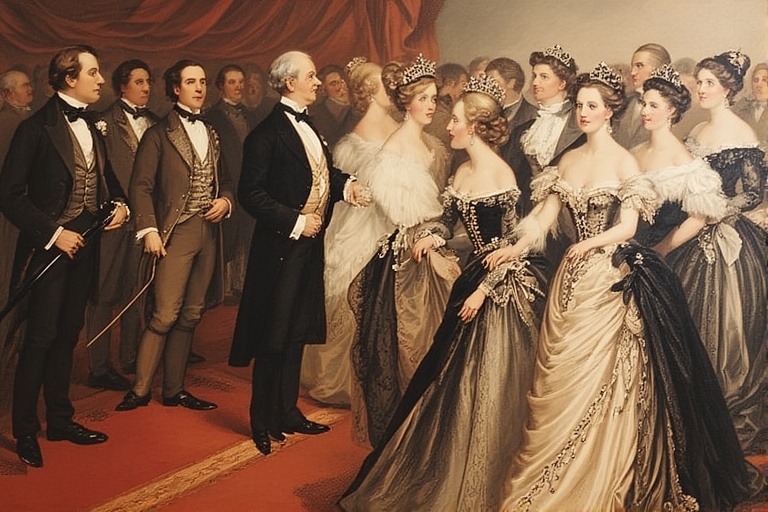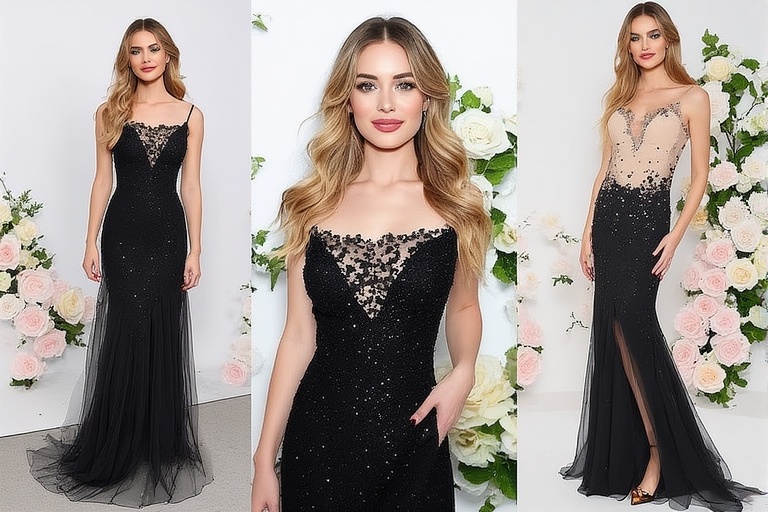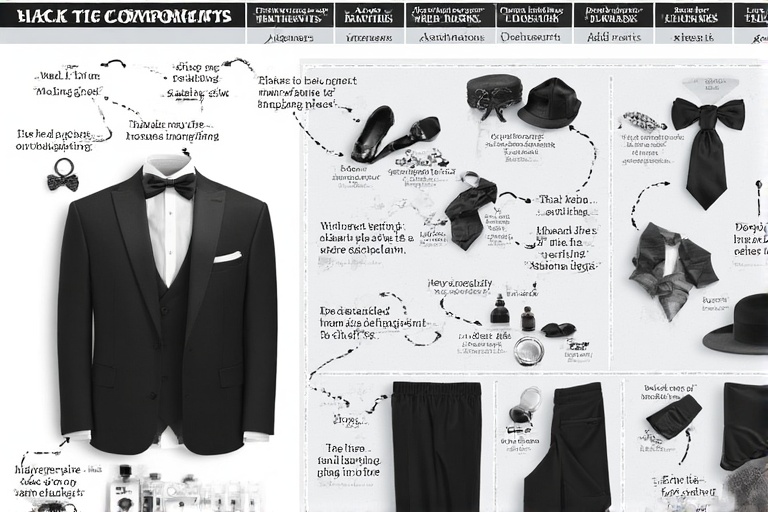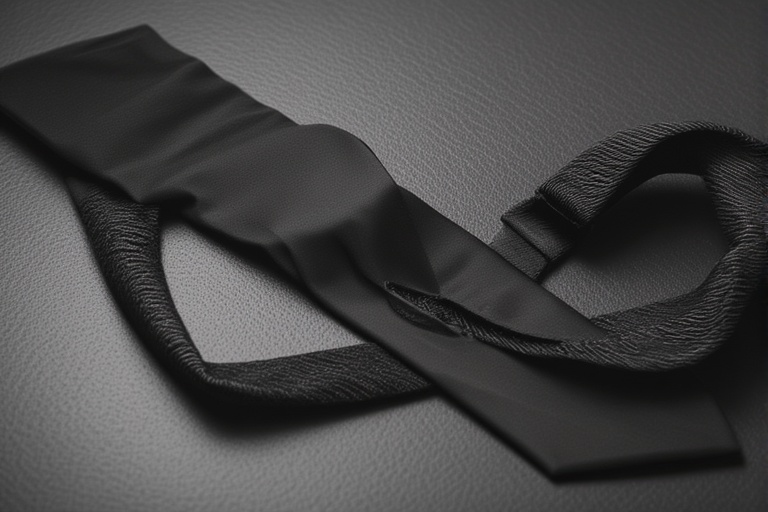Have you ever stared at an invitation marked “black tie” and wondered what exactly that means? You’re not alone. The black tie dress code is a staple for elegant evening events, blending tradition with timeless style. In this comprehensive guide, we’ll break down everything from its origins to must-have attire for men and women, plus tips to avoid common pitfalls. Whether you’re heading to a wedding, gala, or awards ceremony, you’ll gain the confidence to dress impeccably and enjoy the night. Let’s dive in and make sure you nail that sophisticated look.

A classic example of mens black tie attire, featuring a tuxedo, bow tie, and polished shoes.
What Is Black Tie? Understanding the Basics
Black tie is a semi-formal dress code for evening occasions, sitting between casual business wear and ultra-formal white tie. It originated in the 19th century and signals sophistication without over-the-top rigidity. Typically reserved for events after 6 p.m., it emphasizes dark suits, elegant gowns, and polished accessories.
Think of it as the gold standard for formal nights out. According to etiquette experts at The Emily Post Institute, black tie allows some flexibility but demands a level of polish that elevates the entire gathering. It’s not just about clothes—it’s about creating an atmosphere of refinement.
Key elements include:
- Dark tuxedo or dinner jacket for men.
- Floor-length gowns or chic alternatives for women.
- Accessories like bow ties, cufflinks, and evening bags.
This code ensures everyone looks their best, making the event memorable.
The History of Black Tie: From Royalty to Red Carpets
The black tie dress code traces back to 1865, when Britain’s Prince of Wales (later King Edward VII) commissioned a tailless smoking jacket for informal dinners at his Sandringham estate. This innovation, crafted by Savile Row tailors Henry Poole & Co., marked a shift from stiff tailcoats to more comfortable evening wear.
By the 1880s, the style crossed the Atlantic. In America, it’s linked to Tuxedo Park, New York, where socialite James Brown Potter introduced it after seeing it in Europe. The term “tuxedo” stuck, named after the elite enclave.
Post-World War I, black tie became semi-formal standard, replacing white tie for many occasions. The 1960s brought colorful experiments, but classics returned by the 1980s. Today, it’s evolved with modern twists, yet core rules remain.
As menswear expert Sven Raphael Schneider from Gentleman’s Gazette notes, “Black tie honors tradition while allowing personal flair.” This history underscores why it endures.

Vintage illustration depicting the evolution of black tie attire in social settings.
Black Tie Attire for Men: Step-by-Step Guide
Dressing for black tie as a man is straightforward once you know the essentials. Start with the foundation: a black or midnight blue tuxedo jacket with satin lapels. Pair it with matching trousers featuring a satin stripe down the side.
Here’s how to assemble your look:
- Jacket: Single- or double-breasted, peaked or shawl lapels. Avoid notch lapels for true formality.
- Shirt: White dress shirt with a pleated or marcella front, French cuffs, and a turndown collar.
- Bow Tie: Black silk, self-tied for authenticity—pre-tied is a faux pas.
- Waist Covering: Cummerbund or low-cut waistcoat in black to hide the shirt’s waistband.
- Trousers: High-waisted, held by suspenders (never a belt).
- Shoes: Patent leather Oxfords or opera pumps.
- Accessories: Studs, cufflinks, and a white pocket square. Optional: a boutonnière.
For warmer climates, a white dinner jacket is acceptable. Rent if needed, but investing in a tailored fit pays off. As GQ advises, “Fit is king—too loose or tight ruins the elegance.”
Black Tie Attire for Women: Elegant Options and Tips
For women, black tie offers more creativity while maintaining formality. The classic choice is a floor-length evening gown in luxurious fabrics like silk, velvet, or chiffon. Colors can vary, but stick to sophisticated hues—black is always safe.
Modern alternatives include:
- Formal jumpsuits or pantsuits for a contemporary edge.
- Cocktail dresses if the event specifies “black tie optional,” but full-length is preferred.
- Accessories: Evening clutch, statement jewelry, and heels. Long gloves add vintage charm.
Vogue recommends, “Opt for fabrics that catch the light for that red-carpet glow.” Ensure the hem skims the floor in heels. For weddings, avoid white unless specified.

An elegant black evening gown exemplifying womens black tie style.
Hair and makeup should complement: updos for gowns, natural glam for balance. This flexibility lets you express personality within the code.
Common Mistakes to Avoid in Black Tie Dressing
Even seasoned attendees slip up. One top error: wearing a regular business suit instead of a tuxedo—it’s too casual. Another: a clip-on bow tie, which lacks the handmade charm.
Watch for these pitfalls:
- Exposed waistbands: Always cover with a cummerbund or vest.
- Wrong shoes: Sneakers or loafers? No—stick to patent leather.
- Over-accessorizing: Keep it minimal; no flashy watches.
- Mismatched colors: Bow tie and lapels must coordinate.
- For women: Too short hems or casual fabrics like cotton.
As Gentleman’s Gazette warns, “Notch lapels on a tux scream rental.” Tailoring fixes most issues—get fitted for perfection.

Infographic breaking down essential black tie components to avoid mistakes.
When and Where to Wear Black Tie: Event Examples
Black tie shines at evening affairs like galas, operas, and charity balls. It’s common for weddings, especially upscale ones, though some prefer “black tie optional” for guest ease.
Examples include:
- Award ceremonies (e.g., Oscars red carpet).
- Formal dinners or corporate milestones.
- Holiday parties with a luxe vibe.
- Masquerade balls or themed fundraisers.
If unsure, check the invite or host. Overdressing slightly beats underdressing in formal settings.
For more inspiration, explore resources like GQ’s black tie guide or Vogue’s women’s edition. Internally, see our related article on white tie differences.
| You May Also Like:Sweat Resistant Bolo Ties |
Final Thoughts: Embrace the Elegance of Black Tie
Mastering the black tie dress code boils down to respecting tradition while adding your touch. From its royal roots to modern interpretations, it’s about feeling confident in refined attire. Remember the basics: tux for men, gown for women, and always prioritize fit.
Ready for your next event? Start by auditing your wardrobe or consulting a tailor. You’ll not only look great but also honor the occasion. What’s your go-to black tie look? Share in the comments!

Leave a Reply